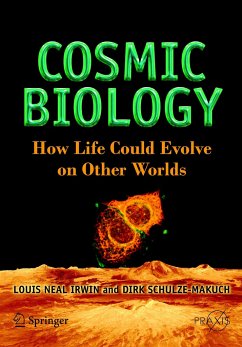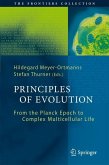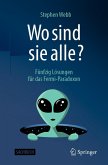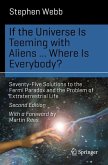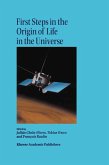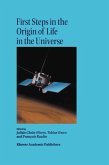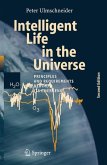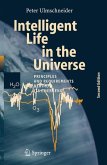In Cosmic Biology , Louis Irwin and Dirk Schulze-Makuch guide readers through the range of planetary habitats found in our Solar System and those likely to be found throughout the universe. Based on our current knowledge of chemistry, energy, and evolutionary tendencies, the authors envision a variety of possible life forms. These range from the familiar species found on Earth to increasingly exotic examples possible under the different conditions of other planets and their satellites.
Discussions of the great variety of life forms that could evolve in these diverse environments have become particularly relevant in recent years with the discovery of around 300 exoplanets in orbit around other stars and the possibilities for the existence of life in these planetary systems. The book also posits a taxonomic classification of the various forms of life that might be found, including speculation on the relative abundance of different forms and the generic fate of living systems. The fate and future of life on Earth will also be considered. The closing passages address the Fermi Paradox, and conclude with philosophical reflections on the possible place of Homo sapiens in the potentially vast stream of life across the galaxies.
Discussions of the great variety of life forms that could evolve in these diverse environments have become particularly relevant in recent years with the discovery of around 300 exoplanets in orbit around other stars and the possibilities for the existence of life in these planetary systems. The book also posits a taxonomic classification of the various forms of life that might be found, including speculation on the relative abundance of different forms and the generic fate of living systems. The fate and future of life on Earth will also be considered. The closing passages address the Fermi Paradox, and conclude with philosophical reflections on the possible place of Homo sapiens in the potentially vast stream of life across the galaxies.
From the reviews:
"Cosmic Biology discusses the feasibility of life in the scorching cloud decks of Venus or within the volcanic violence of lo. ... This neat trick holds up a mirror to our own efforts at characterising the extrasolar planets we're now discovering. ... long data tables, information dense diagrams and sections that sometimes read like expanded bullet point lists gives the volume the feel of a textbook. ... a great book to push your horizons if you're already familiar with the themes of astrobiology ... ." (Lewis Dartnell, Sky at Night Magazine, August, 2011)
"The text, which is intended for nonscientists, are novel and distinctly important scientifically. ... The core of the book covers case history examinations of possible biological planets, moons, and exoplanets. For those who teach about the possibility of life on other planets, this book provides an excellent introduction to these alternative worlds and, in doing so, accomplishes more than the authors' modestclaims in the preface. Summing Up: Recommended. All levels/libraries." (P. K. Strother, Choice, Vol. 48 (11), July, 2011)
"Cosmic Biology discusses the feasibility of life in the scorching cloud decks of Venus or within the volcanic violence of lo. ... This neat trick holds up a mirror to our own efforts at characterising the extrasolar planets we're now discovering. ... long data tables, information dense diagrams and sections that sometimes read like expanded bullet point lists gives the volume the feel of a textbook. ... a great book to push your horizons if you're already familiar with the themes of astrobiology ... ." (Lewis Dartnell, Sky at Night Magazine, August, 2011)
"The text, which is intended for nonscientists, are novel and distinctly important scientifically. ... The core of the book covers case history examinations of possible biological planets, moons, and exoplanets. For those who teach about the possibility of life on other planets, this book provides an excellent introduction to these alternative worlds and, in doing so, accomplishes more than the authors' modestclaims in the preface. Summing Up: Recommended. All levels/libraries." (P. K. Strother, Choice, Vol. 48 (11), July, 2011)

